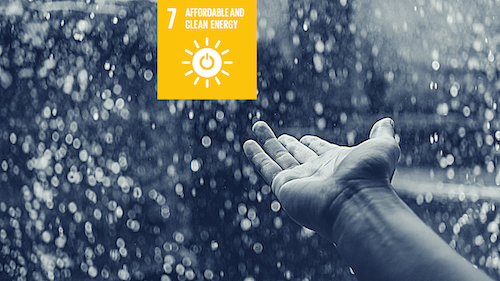We’ve all watched TED Talks, haven’t we? They’re the flag bearers of the internet-driven knowledge economy that we all are privileged to be a part of. In fact, access to information has never been so universal and easy. That’s the reason why a professor at Stockholm could easily reach out to young professionals sitting in Bangalore (or Honolulu, as one of our co-founders puts it); and motivate them to build a better world together.

That’s precisely what happened when I watched Dr. Hans Rosling passionately explain how a simple Washing Machine can lead to a revolution in developing economies. These simple machines reduce what used to be a hard, time-consuming labor into an activity that could be completed in minutes with hardly any effort or monitoring!. These women can now use the time saved, to learn new things, teach their kids and earn additional incomes too, improving livelihoods and quality of life to a great extent.
Quick Note : I wish I could have mentioned Men too in the paragraph above; but that’s not the reality unfortunately, and that’s a matter of great concern too!
However, machines like the washing machine come with a cost. Can enough families in a developing country afford :
– the cost of buying the washing machine?
– the cost of energy required (electricity) to run it?
And that’s where the new Poverty Line lies, or, The Wash Line, as Prof. Rosling passionately calls it. In developing economies, it is no longer the Poverty Line that matters. It is ‘The Wash Line’. Higher the percentage of people living above the wash line, the better would be the economy.
While devices like the Washing Machine may not be very expensive these days in countries like India, what actually pushes The Wash Line lower is, quite simply, universal access to affordable Clean Energy, as we march towards 2030 Agenda for Sustainable Development. To be precise, Goal Number 7 of UN’s Sustainable Development Goals (SDGs) specifies that by 2030, all nations must:

“Ensure access to affordable, reliable, sustainable and modern energy for all”
And that’s where India is headed towards, with great velocity, powered by Solar and Wind energy systems. The target for renewable energy capacity by 2030 is 450 GW. This is roughly 5 times the renewable energy capacity today which stands at 90 GW, representing approx. 24% of the total energy capacity. In fact it is estimated that in order to reach net zero emissions by 2050, India should generate 83% of its energy via renewable energy sources. That’s huge!
Are we, as a nation, ready for that?
We’re definitely on the right course. In fact, over the last three years, the price of electricity generated by Solar Energy systems have dropped from around Rs. 18 per KW to somewhere around Rs. 6 per KW, bringing it at par (or sometimes even lesser) compared to traditional sources of electricity like Coal (Thermal), Hydro, Nuclear, etc. In fact some of the recent government projects in 2020 saw a stunning bid as low as Rs. 2 per Kw. This, certainly, is a milestone event in the energy management scenario in India.
The drop in price is primarily due to the drop in cost of Solar Panels thanks to Chinese manufacturers flooding the market with abundant supply. There has also been a significant growth in efficiencies at which solar PV panels convert sunlight to electricity. From hovering around 15%-17% for a long time, the efficiencies are now upwards of 20% for most panels; increasingly being powered by Mono PERC or HJT panels replacing the widely used Poly-Crystalline cells earlier. The increasing availability of various forms of government subsidies has pushed the rates down further.
Thankfully, this trend has caught the attention of our policy makers too and India has doubled-down on its Clean Energy targets. In fact, the role of Solar has grown significantly in India’s March forwards clean energy. Of a total target of 175 GW of Energy to be generated via renewable sources by 2022, 100 GW has to be driven via Solar Energy Projects; while Wind Energy @ 60 GW,
Small Hydro Projects @ 5GW and other sources @ 10GW make up the rest. Of the 100GW targeted generation via Solar Energy Projects:
1. 60GW has to be generated by large scale Commercial, Industrial and Governmental Projects generating upwards of 10 KW of power each.
2. 40 GW has to be driven by Rooftop Solar Installations, typically less than 10KW each.
While large scale installations dominated the growth in Solar over the past few years, it is the segment of Rooftop Solar that is poised to scale up big time in the coming years. In fact, commercial projects have already achieved more capacity than the targeted 60GW and therefore, are likely to slow down with continued drop in prices. Rooftop Solar installations though, have achieved less than 10% of the target and that’s where Synergize Solar is set to make a difference.
Let us leave you with a thought:
Residential Solar Installations typically hover around 3KW per installation for an average urban household. Which means, to achieve a target of 40 GW, roughly 1.33 Crore households need to switch to Solar Energy.
Are you ready to make that switch and push India towards a clean energy future?
P.S. : It costs much less than buying a car or almost as much as buying a Royal Enfield or a KTM! Use our Solar Calculator to get the real deal.
